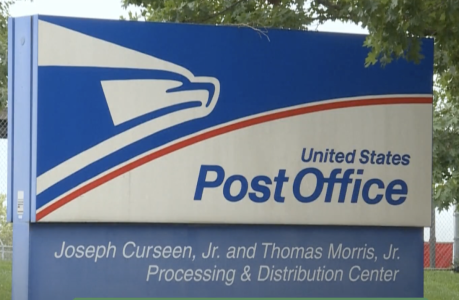USPS plans changes to improve efficiency, with potential effects on mail delivery
By
Veronica E.
- Replies 0
For generations, the United States Postal Service (USPS) has been a trusted part of daily life—delivering letters, packages, and important documents across the country.
But as technology reshapes how we communicate, the USPS faces a shifting landscape and tough financial challenges.
In response, the agency is implementing a series of changes aimed at reducing costs and maintaining long-term service.
Some of these adjustments, however, could lead to longer delivery times for certain customers.
The USPS has seen a significant decline in first-class mail, with volumes dropping nearly 80% since 1997—reaching their lowest point since 1968.
This sharp decrease, combined with rising operational costs, contributed to a $9.5 billion loss in 2024.

Projections show an expected $6.9 billion loss for 2025.
In an effort to address these financial pressures, the USPS is pursuing a cost-saving strategy intended to generate $36 billion in savings over the next decade.
Measures include operational restructuring and workforce adjustments.
Amid these efforts, a separate proposal by President Trump has attracted attention: the idea of merging the USPS with the Commerce Department.
The suggestion, reported by sources such as The Washington Post and The Wall Street Journal, has raised legal and logistical questions.
Critics point out that the USPS operates as an independent agency under the Postal Reorganization Act of 1970, and changes of that scale would likely require Congressional action.
Supporters of the idea argue that a merger could improve efficiency, but no official legislative steps have been taken toward such a change.
Starting April 1, the USPS began implementing updated service standards.
While many mail services will retain their existing delivery timelines, some adjustments could result in slightly faster delivery for certain packages, and slightly slower delivery for others.
Changes in regional transportation schedules mean that in some areas, delivery times could extend by about one day.
First-Class Mail, Periodicals, Marketing Mail, and Priority Mail services are among those seeing refinements.
The USPS states that its shipping product, USPS Ground Advantage, will continue to offer a 2–5 day delivery range, with a focus on improving overall reliability.
Five-digit ZIP Code additions are intended to make mail sorting and delivery more efficient compared to the current three-digit pair system.
The USPS has an online map available where customers can check estimated delivery times between ZIP Codes. Customers can also review updated service standards by visiting usps.com.

Also read: USPS under fire: Lawmaker blasts mail delivery failures!
Service standards are set to be refined for the following categories:
Additional changes are expected to take effect beginning July 1, with further details anticipated closer to that date.
Discussions about broader reforms to the USPS, including privatization or major structural changes, remain hypothetical at this stage and would require Congressional involvement.
The USPS maintains that its goal is to adapt to changing customer needs while remaining financially sustainable.
Read next: USPS cuts popular program and customers are furious over late bills and fees!

As the USPS continues to make changes, we’re curious how these shifts may affect your daily life. Have you noticed any recent changes to your mail delivery times? What role does the postal service play in your routine? Share your thoughts in the comments—we’d love to hear your experience and perspective!
But as technology reshapes how we communicate, the USPS faces a shifting landscape and tough financial challenges.
In response, the agency is implementing a series of changes aimed at reducing costs and maintaining long-term service.
Some of these adjustments, however, could lead to longer delivery times for certain customers.
The USPS has seen a significant decline in first-class mail, with volumes dropping nearly 80% since 1997—reaching their lowest point since 1968.
This sharp decrease, combined with rising operational costs, contributed to a $9.5 billion loss in 2024.

The United States Postal Service is updating operations and service standards as part of ongoing efforts to improve efficiency and reduce costs. Image Source: YouTube / News Today.
Projections show an expected $6.9 billion loss for 2025.
In an effort to address these financial pressures, the USPS is pursuing a cost-saving strategy intended to generate $36 billion in savings over the next decade.
Measures include operational restructuring and workforce adjustments.
Proposed merger with the Commerce Department
Amid these efforts, a separate proposal by President Trump has attracted attention: the idea of merging the USPS with the Commerce Department.
The suggestion, reported by sources such as The Washington Post and The Wall Street Journal, has raised legal and logistical questions.
Critics point out that the USPS operates as an independent agency under the Postal Reorganization Act of 1970, and changes of that scale would likely require Congressional action.
Supporters of the idea argue that a merger could improve efficiency, but no official legislative steps have been taken toward such a change.
Also read: Shocking USPS price hike: How much more will your summer mail cost you?
What changes customers might notice
Starting April 1, the USPS began implementing updated service standards.
While many mail services will retain their existing delivery timelines, some adjustments could result in slightly faster delivery for certain packages, and slightly slower delivery for others.
Changes in regional transportation schedules mean that in some areas, delivery times could extend by about one day.
First-Class Mail, Periodicals, Marketing Mail, and Priority Mail services are among those seeing refinements.
The USPS states that its shipping product, USPS Ground Advantage, will continue to offer a 2–5 day delivery range, with a focus on improving overall reliability.
Five-digit ZIP Code additions are intended to make mail sorting and delivery more efficient compared to the current three-digit pair system.
The USPS has an online map available where customers can check estimated delivery times between ZIP Codes. Customers can also review updated service standards by visiting usps.com.

As part of broader operational updates, the USPS is adjusting service standards and delivery timelines to align with long-term efficiency goals. Image Source: YouTube / PBS NewsHour.
Also read: USPS under fire: Lawmaker blasts mail delivery failures!
Service standards are set to be refined for the following categories:
- First-Class Mail
- Periodicals
- Marketing Mail
- Package Services (Bound Printed Matter, Media Mail and Library Mail)
- USPS Ground Advantage
- Priority Mail
- Priority Mail Express
Additional changes are expected to take effect beginning July 1, with further details anticipated closer to that date.
Discussions about broader reforms to the USPS, including privatization or major structural changes, remain hypothetical at this stage and would require Congressional involvement.
The USPS maintains that its goal is to adapt to changing customer needs while remaining financially sustainable.
Read next: USPS cuts popular program and customers are furious over late bills and fees!
Key Takeaways
- The United States Postal Service (USPS) is implementing operational changes aimed at improving efficiency and reducing costs, which may lead to slower mail delivery for some customers.
- A sharp decline in first-class mail volume and continued financial losses have prompted the USPS to pursue restructuring and workforce adjustments.
- Former President Trump suggested merging the USPS with the Commerce Department, a proposal that has raised legal and operational questions but has not advanced legislatively.
- Service standard adjustments began in April 2025, with additional changes expected later in the year, potentially affecting delivery times for certain types of mail.
As the USPS continues to make changes, we’re curious how these shifts may affect your daily life. Have you noticed any recent changes to your mail delivery times? What role does the postal service play in your routine? Share your thoughts in the comments—we’d love to hear your experience and perspective!






